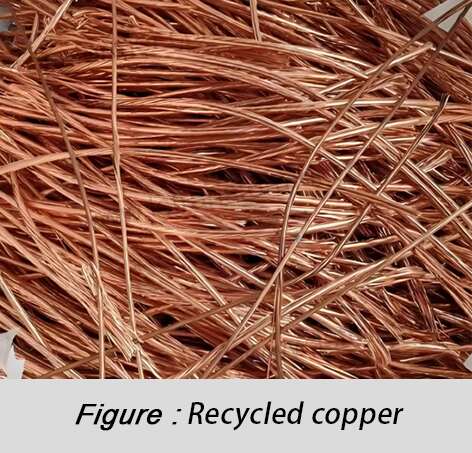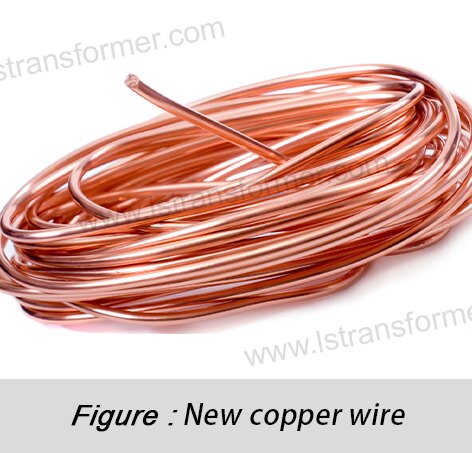Can Recycled Copper Wire Be Used in Transformers? —Comprehensive Analysis and Professional Recommendations
Can Recycled Copper Wire Be Used in Transformers?
—Comprehensive Analysis and Professional Recommendations
With the increasing global awareness of environmental protection, the use of recycled materials in various industries has become more widespread. For transformer manufacturers and users, the question of whether recycled copper wire can be used in transformers has garnered significant attention. This article systematically analyzes the feasibility of using recycled copper wire in transformers from multiple perspectives, including material properties, international standards, performance impacts, and economic benefits. It will help you make informed decisions by comparing the differences between recycled and virgin copper in terms of conductivity, mechanical properties, and more, while also examining regulations set by IEC, IEEE, and other international standards. Practical recommendations will also be provided.
Content
1. Comparison of Material Properties: Recycled vs. Virgin Copper
Recycled copper is obtained by processing scrap copper materials (such as wires, electronic components, and industrial waste) through smelting and refining. Compared to virgin copper, which is directly extracted from copper ore, the two differ in chemical composition and physical properties, which directly affect their performance in transformer applications.
● Differences in Electrical Conductivity
The conductivity of copper primarily depends on its purity—higher impurity levels result in lower conductivity. The International Annealed Copper Standard (IACS) defines 100% conductivity for copper with 100% purity and a resistivity of 0.01724 Ω·mm²/m. High-quality virgin copper typically achieves 101% IACS or higher, while recycled copper, depending on processing methods, ranges between 98% and 101% IACS.
Conductivity Calculation Formula:
Conductivity (%IACS) = (0.01724 / Actual Resistivity) × 100
Resistivity can be measured using the four-probe method or eddy current method.
Copper Type | Typical Purity (%) | Conductivity (%IACS) | Resistivity (Ω·mm²/m, 20°C) |
Virgin Copper (Electrolytic) | ≥99.99 | 101-102 | 0.0169-0.0171 |
High-Quality Recycled Copper | 99.95-99.99 | 99-101 | 0.0171-0.0174 |
Standard Recycled Copper | 99.90-99.95 | 97-99 | 0.0174-0.0177 |
Low-Quality Recycled Copper | <99.90 | <97 | >0.0177 |
Table 1: Comparison of Conductivity for Different Copper Purity Levels
● Mechanical Properties Comparison
Transformer windings require copper wire with good ductility and tensile strength to withstand mechanical stress during winding. Recycled copper, having undergone multiple melting and casting processes, may contain more defects in its lattice structure, leading to:
(1)Tensile Strength Difference:High-quality recycled copper is only 2-5% weaker than virgin copper, but low-quality recycled copper may be over 10% weaker.
(2)Reduced Elongation:Repeated processing decreases ductility, potentially causing micro-cracks during tight winding.
(3)Increased Hardness:Impurities can harden the wire, affecting workability.
● Impurity Content and Distribution
The main challenge with recycled copper is impurity control. Common impurities include:
(1)Metallic Impurities:Sn, Pb, Fe, Ni (from solder and alloy components).
(2)Non-Metallic Inclusions:Oxides, sulfides (from insulation residue).
(3)Gas Content:H, O (affecting processing performance).
These impurities reduce conductivity and long-term reliability. Modern electrolytic refining can achieve 99.99% purity for recycled copper, but at a higher cost.
2. International Standards for Copper Wire in Transformers
Major global standards organizations have clear requirements for conductor materials in transformers.
● IEC Standards
The International Electrotechnical Commission (IEC) specifies in the IEC 60076 series:
(1)IEC 60076-1:General requirements for power transformers, emphasizing materials must ensure a 30+ year lifespan.
(2)IEC 60851:Test methods for winding wires, including conductivity and elongation tests.
(3)IEC 60228:Standards for conductor resistance, specifying maximum DC resistance at 20°C.
While IEC does not explicitly ban recycled copper, materials must meet all performance criteria, posing challenges for refining processes.
● IEEE Standards
IEEE Std C57.18.10-1998 states:
"Winding conductors shall use high-conductivity copper (≥100% IACS), free of surface defects, with chemical composition complying with ASTM B49."
ASTM B49 limits total impurities to ≤0.03%, with individual impurities ≤0.01%, demanding strict control for recycled copper.
● EU RoHS and REACH Regulations
Environmental regulations restrict hazardous substances in recycled copper:
(1)Lead (Pb):<100 ppm (for power equipment).
(2)Cadmium (Cd), Mercury (Hg):Limited to ppm levels.
(3)Brominated Flame Retardants (PBBs):Not detectable.
Recycled copper meeting these standards may cost as much as virgin copper but can command a green certification premium.
3. Impact of Recycled Copper on Transformer Performance
Balancing technical feasibility and economics requires understanding how recycled copper affects transformer performance.
● Efficiency and Losses
Transformer load losses include:
(1)DC resistance loss (I²R)
(2)Eddy current loss
(3) Stray loss
Recycled copper’s slightly higher resistivity increases DC resistance loss. For a 1000kVA transformer, using 99% IACS recycled copper (vs. 101% virgin copper) raises losses by 1.5-2% at 75°C. Over 10 years, this could outweigh material cost savings.
●Loss Calculation Formula:
Total Copper Loss = I² × R × (1 + α × (T-20)) + Eddy Current Loss
Where:
R: DC resistance at 20°C
α: Copper’s temperature coefficient (0.00393/°C)
T: Operating temperature
● Thermal Performance and Lifespan
Transformer lifespan depends on insulation aging, which follows the Arrhenius equation:
Aging Rate = A × e^(-Ea/RT)
Where:
A: Pre-exponential factor
Ea: Activation energy
R: Gas constant
T: Absolute temperature (K)
A 6-8°C temperature rise halves insulation life. Recycled copper’s higher resistance may increase operating temperature by 2-3°C, reducing theoretical lifespan by 10-15% over 20-30 years.
● Short-Circuit Withstand Capability
During short circuits, copper must withstand electromagnetic forces.Recycled copper’s complex processing history requires verification of:
– Dynamic yield strength (resistance to sudden forces).
– Stress relaxation properties (deformation recovery).
– Recrystallization temperature (high-temperature strength).
Annealing can improve these properties but involves cost-performance trade-offs.
4. Economic and Environmental Trade-Offs
Decisions should consider total lifecycle costs and environmental benefits.
● Cost Structure Analysis
Cost Item | Virgin Copper | High-Quality Recycled Copper | Standard Recycled Copper |
Material Cost | $9,000 | $8,200 | $7,500 |
Refining Energy Cost | $600 | $800 | $1,000 |
Environmental Processing Cost | $200 | $300 | $500 |
Performance Loss Cost* | $0 | $150 | $500 |
Certification & Testing Cost | $100 | $300 | $200 |
Total Cost | $9,900 | $9,750 | $9,700 |
Carbon Footprint (kg CO2e) | 4,500 | 2,800 | 3,500 |
Table 2: Lifecycle Cost Comparison (Per Ton of Copper Wire)
● Environmental Certification Premiums
Certifications like the following enhance market value:
(1)EPD (Environmental Product Declaration):Quantifies eco-benefits.
(2)Cradle to Cradle Certification:Validates recyclability.
(3)LEED v4 Credits:For green building projects.
These often require ≥30% recycled content, incentivizing recycled copper use.
5. Practical Recommendations and Application Scenarios
Based on the analysis, here are tailored recommendations:
● Recommended Uses for Recycled Copper
(1)Distribution Transformers (≤2500kVA): Lower load rates minimize efficiency impacts.
(2)Short-Term Equipment:E.g., temporary site transformers (<15-year lifespan).
(3)Eco-Conscious Projects:For green certifications or ESG goals.
(4)Price-Sensitive Markets:Where material cost outweighs efficiency concerns.
● Caution or Avoidance Scenarios
(1)Large Power Transformers (≥10MVA):Efficiency losses escalate operational costs.
(2)High-Temperature Designs:Accelerated insulation aging.
(3)High-Frequency Transformers:Skin effect magnifies impurity impacts.
(4)Critical Applications:E.g., nuclear plants, data centers.
● Quality Control Measures
If using recycled copper, implement:
(1)Source Control:Prioritize clean scrap (e.g., Class 1 copper, motor windings).
(2)Refining Optimization:Electrolytic refining, phosphorus deoxidation, controlled casting.
(3)Performance Testing:Conductivity (IEC 60468), tensile strength (ASTM E8), bend tests, hydrogen embrittlement checks.
In Summary
The use of recycled copper in transformers is not a simple yes-or-no question but a techno-economic decision requiring evaluation of application needs, performance requirements, and cost structures. Key takeaways:
(1)Feasibility: Advanced refining enables recycled copper to meet transformer standards, but strict quality control is essential.
(2)Performance: Suitable for small, low-load transformers; virgin copper remains preferred for large, high-efficiency units.
(3)Compliance: Recycled copper is permissible if it meets IEC, IEEE, and ASTM standards.
(4)Economics: Environmental premiums (not direct savings) often justify recycled copper.
(5)Future Trends: As refining improves and carbon pricing spreads, recycled copper adoption will grow.
Manufacturers should establish recycled copper assessment systems, partner with reliable suppliers, and conduct Lifecycle Assessments (LCA) to quantify environmental benefits for green marketing.
Contact Us
LuShan, est.1975, is a Chinese professional manufacturer specializing in power transformers and reactors for 50+ years. Leading products aresingle-phase transformer, three-phase isolation transformers,electrical transformer,distribution transformer, step down and step up transformer, low voltage transformer, high voltage transformer, control transformer, toroidal transformer, R-core transformer;DC inductors, AC reactors, filtering reactor, line and load reactor, chokes, filtering reactor, and intermediate,high-frequency products.
Our power transformers and reactors are widely used in 10 application areas: rapid transit, construction machinery, renewable energy, intelligent manufacturing, medical equipment, coal mine explosion prevention , excitation system, vacuum sintering(furnace), central air conditioning.
Know more about power transformer and reactor :www.lstransformer.com.
If you would like to obtain customized solutions for transformers or reactors, please contact us.
WhatsApp:+86 17267488565
Email:marketing@hnlsdz.com

 EN
EN
 FR
FR DE
DE ES
ES


